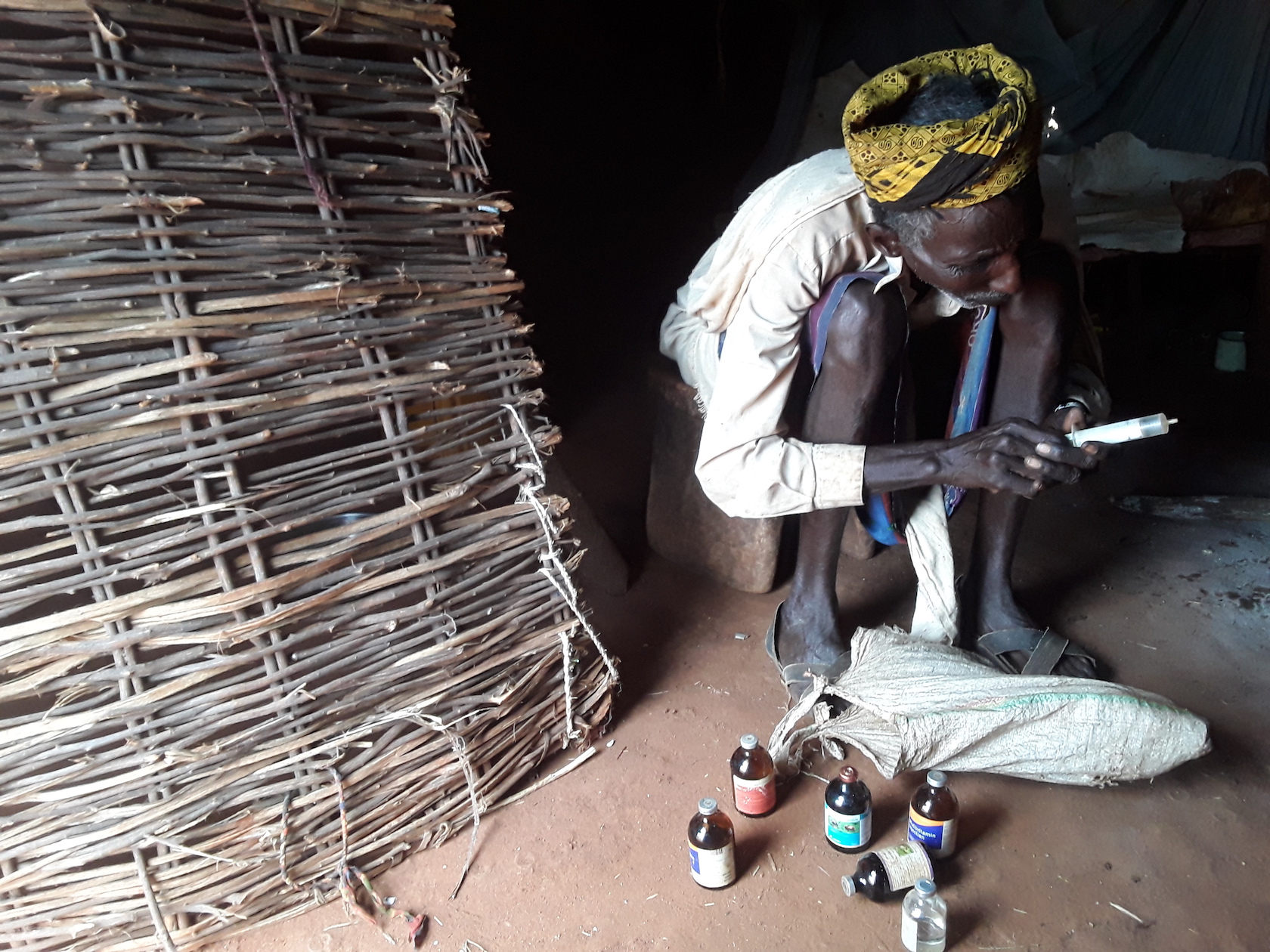Contact details:
Biruk Alemu (b.a.gemeda@cgiar.org). PhD fellow. International Livestock Research Institute (ILRI), Ethiopia.
Background
Ethiopia has the largest livestock population in Africa. In this country, different production systems and agroecosystems coexist making the process of harmonising guidelines for livestock production challenging. As in many other countries, in Ethiopia, regulations on use of antimicrobials in livestock are poorly enforced and farmers have access to veterinary drugs that can be illegal or counterfeit. Moreover, animal consumption of drugs in these settings is not commonly supervised by a trained veterinarian. Currently, information regarding antimicrobial usage in animals is scarce, and most research is mainly focused on antibiotics and not on other antimicrobials commonly used in animal treatment. Hence the understanding of drivers influencing the use of antimicrobials in animals is poorly understood. Knowledge about how and why farmers use antimicrobials is fundamental to develop interventions that promote attitude and behavioural change in farmers towards antimicrobials.
Project overview
The aim of this study was to understand knowledge, attitudes and practices of smallholder farmers regarding antimicrobial use, antimicrobial resistance and the presence of residues of antimicrobials. A cross-sectional survey in six districts of Ethiopia was carried out with 379 households randomly selected from 12 representative sites representing three different agro-ecologies and production systems (low/midland pastoral, lowland crop-livestock and highland crop-livestock). The survey based on the AMUSE Livestock tool(ODK on tablets), included 103 open-ended and closed questions about household demographics, farm characteristics, management of manure, feed types, animal health constraints, disease prevention, animal health services, antimicrobial use, farm product consumption and cost of animal health. A demonstration box with drugs bought in local veterinary drug stores was prepared to facilitate the researcher in gathering antimicrobial usage information. Data were analysed using descriptive statistics of STATA 14.
Main Findings
The results of this research indicate that the use of antimicrobials in the areas surveyed vary amongst all of the different categories. Moreover, it revealed that at least 95% of farmers had at least one antibiotic at hand. Antibiotics were mainly used for treatment whereas antihelmintics were used for disease prevention, and at least 12% mentioned that they have experienced situations where drugs did not work. The use of vitamins and acaricides was less common than the use of antiparasitics (especially fasciolicides, ivermectin and albendazoles) by all types of farmers. Respiratory diseases and digestive/internal parasitic infections were the main reason for antimicrobial use.
Low/midland pastoralist farmers commonly use antimicrobials (around 90%), especially betalactamics, aminoglycosides and tetracyclines (including human preparations) for veterinary purposes. Private drug stores were reported as their main suppliers, and around 80% of them admitted consuming milk from antibiotics-treated goat and cattle less than 7 days after treatment, not respecting recommended withdrawal periods after animal treatment. In contrast, lowland crop-livestock and highland crop-livestock farmers reported lower use of antimicrobials (around 25%). Governmental or official veterinary shops were reported as their suppliers, and around 14% also reported consumption of cow milk less than 7 days after animal treatment.
Knowledge about antibiotics pharmacology and vaccination was poor amongst at least 20% of livestock owners, and around 30% of farmers reported using antimicrobials for shorter or longer periods of time than recommended by drug manufacturers. Additionally, 12.7% of farmers mentioned that they have experienced situations where drugs did not work.
Conclusions
The results of the study showed that knowledge, attitudes and practices about antimicrobial use differ across all three types of agro-ecologies. Lack of knowledge and inappropriate practices were common amongst all categories, especially for farmers in the low/midland pastoralist system, which represents one of the most disadvantageous farmer populations. In addition, access to legal veterinary drugs is limited in some areas, especially in the highlands, and counterfeit and illegal imports contribute to incorrect practices of antimicrobial use in pastoralist areas. Findings of this study help to target future interventions to reduce antimicrobial use and resistance in the smallholder livestock systems of Ethiopia. For this, increasing farmers’ awareness and knowledge on antimicrobial resistance will be crucial.
Research impact
The study lays the foundation for understanding antimicrobial use in different agro-ecologies in Ethiopia and reveals a need for additional research that documents drivers of behaviour for AMU, identifies sources of counterfeit or poor-quality medicines, determines the presence of resistant bacteria, and analyses the potential links between drug use, the presence of residues of antibiotics in meat and milk destined for human consumption, and antimicrobial resistance. Additionally, the study reaffirms the urgency for interventions to increase awareness amongst smallholder farmers to improve the way antibiotics are used in these settings.
Researchers
Biruk Alemu1, Barbara Wieland1, Ulf Magnusson2
Institutions involved
- International Livestock Research Institute (ILRI), Ethiopia.
- Swedish University of Agricultural Sciences (SLU), Sweden.
Research Subject Area(s)
Animal health, Public health, Antimicrobial Use (AMU)
Funding
- CGIAR research program on Agriculture for Nutrition and Health (A4NH).
- CGIAR research program on Livestock.
- German Academy Exchange Service (DAAD).
More information
*This study is an ongoing PhD research project developed by Biruk Alemu Gemeda at ILRI Ethiopia. More information will be available once final results of the research have been published.
